Welcome to one of the most active flamenco sites on the Internet. Guests can read most posts but if you want to participate click here to register.
This site is dedicated to the memory of Paco de Lucía, Ron Mitchell, Guy Williams, Linda Elvira, Philip John Lee, Craig Eros, Ben Woods, David Serva and Tom Blackshear who went ahead of us.
We receive 12,200 visitors a month from 200 countries and 1.7 million page impressions a year. To advertise on this site please contact us.
|

|
|
RE: what is the name of this chord?
|
You are logged in as Guest
|
|
Users viewing this topic: none
|
|
Login  | |
|

   
Ricardo
Posts: 14860
Joined: Dec. 14 2004
From: Washington DC

|
 RE: what is the name of this chord? (in reply to Guest) RE: what is the name of this chord? (in reply to Guest)
|
|
|
quote:
Pepe is not thinking in terms of melodic minor (I think).
I agree, neither he nor many other flamencos. They just play by ear and feel and "vibe".  Anyway, asking "what is the name of this and why does it work" is the theory question being asked, and I am just giving a possible description and reason. In flamenco practice of course no need to anaylize it this way, you just play it. Anyway, asking "what is the name of this and why does it work" is the theory question being asked, and I am just giving a possible description and reason. In flamenco practice of course no need to anaylize it this way, you just play it.
My only point is, regardless what pepe is thinking or hearing, EFGAb(?)CD are the notes in the example. The one (?) could be Bb, and I have heard this done a lot in other similar examples, and the result is E superlocrian or F melodic minor. I am just saying it is an idea where the harmonic idea relates, and is used often. As I said before the E super locrian and E spanish phrygian Share ALL notes except the B or Bb. So it is a sort of harmonic trick on the ear, and the reasoning behind the exotic flavor (my term vibe) for these passages.
You say no "vibe" in the chicuelo, as if it is perfectly normally occuring harmony in phrygian, but even Todd was like "how could that work in context". My point is it DOES have an exotic vibe, even though it is hard to SEE why cuz nothing is out of the normal phrygian scale, and the reason is this melodic minor relation. Anyway, some other different notes would change the way I analyze it. For example a B natural, or D#.... but they were not present in those passages of pepe and others.
Another way to see these spots is the minor third modulation relationship. For example, in E phrygian, borrowing from G phrygian is done sometimes. The reason it works is the same as the Superlocrian reason....common enharmonic notes.
Hope that clears it a bit.
_____________________________
CD's and transcriptions available here:
www.ricardomarlow.com
|
|
|
|
REPORT THIS POST AS INAPPROPRIATE |
Date Jan. 16 2010 12:02:14
 |
|

   
Ricardo
Posts: 14860
Joined: Dec. 14 2004
From: Washington DC

|
 RE: what is the name of this chord? (in reply to XXX) RE: what is the name of this chord? (in reply to XXX)
|
|
|
quote:
Ricardo and romerito! A question.... I assume you familiarized yourself with scales like lydian, melodic minor, locrian, during your time with Jazz studies etc? Is there any flamenco pieces to study these scales? Coz i mostly hear major, minor and phrygian in flamenco...
Not really, flamencos don't think that way really. Everyonce in while there is a deliberate clever usage out of nowhere in a short falseta, but not really an "exercise" is scale study.
Examples:Monitño and end of la barrosa whole tone scale. Chicuelo's rumba used diminished scale (whole half symmetric). Nuñez Jucal uses D# super locrian in one little spot, he does the same falseta for Indio Gitano por medio.
Those are just isolated examples, where you should really just be learning the notes and keep compas. Later if you hear the name for the scale you just say "oh, I know that from chicuelo" etc etc.
If you are seriously interested, you should just get a jazz method cuz that is what it is all about....chord and scale relationships and usage. Flamenco is NOT about that, and analyzing it that way is totally retro active (meaning everything I have been writing above about superlocrian is totally pointless!). 
Ricardo
_____________________________
CD's and transcriptions available here:
www.ricardomarlow.com
|
|
|
|
REPORT THIS POST AS INAPPROPRIATE |
Date Jan. 16 2010 12:34:58
 |
|

   
Ricardo
Posts: 14860
Joined: Dec. 14 2004
From: Washington DC

|
 RE: what is the name of this chord? (in reply to HolyEvil) RE: what is the name of this chord? (in reply to HolyEvil)
|
|
|
Back to Romerito's point that all these examples derive from the phrygian scale, or rather the spanish phrygian mode which can incorporate both the minor and major third (In A, ABbCC#DEFG), i totally agree. My point all along was that is why these "exotic" sounding chords work in context, because of the shared notes between phrygian and other modes.
I was just pointing out that the exotic part of the sound comes from relationship to some other interesting modes. It need not be an argument, there are different ways to analyze this stuff, and of course this is just supposed to be fun and perhaps generate some creative ideas, not be a definative and final music theory view.
Here is a good example that is not properly nameable to me. Paco uses this por medio , but in many pieces to give an exotic sound. He will even move this chord chromatically, but I honestly can't name it. It seems to be a cluster of notes from the Spanish phrygian, and would be analyzed as a Dbmaj7#11, if not for that one "out" note, D natural, that is simply an incidental thing because of the barre chord shape. Even though it is just notes from A phrygian (A)(Bb)CC#D(E)FG, it has a very exotic sound in context. My guess is Paco stumbled on this chord when transposing some passage by a minor third UP from A phrygian, and used the moveable barre shape.
3
3
5
3
4
3
I guess I would call it Dbmaj7(b9)#11....which would throw off any jazz guy I think, who would not realize at first glance that A phrygian works, but maybe lydian b9 (which I have never heard of) would be the way to read that chord in a chart.
(Db-Ebb-F-G-Ab-Bb-C). Notice if we only make the A natural, we have spanish phrygian (missing E natural).
Fun stuff.

_____________________________
CD's and transcriptions available here:
www.ricardomarlow.com
|
|
|
|
REPORT THIS POST AS INAPPROPRIATE |
Date Jan. 18 2010 8:57:31
 |
|
 New Messages New Messages |
 No New Messages No New Messages |
 Hot Topic w/ New Messages Hot Topic w/ New Messages |
 Hot Topic w/o New Messages Hot Topic w/o New Messages |
 Locked w/ New Messages Locked w/ New Messages |
 Locked w/o New Messages Locked w/o New Messages |
|
 Post New Thread
Post New Thread
 Reply to Message
Reply to Message
 Post New Poll
Post New Poll
 Submit Vote
Submit Vote
 Delete My Own Post
Delete My Own Post
 Delete My Own Thread
Delete My Own Thread
 Rate Posts
Rate Posts
|
|
|
Forum Software powered by ASP Playground Advanced Edition 2.0.5
Copyright © 2000 - 2003 ASPPlayground.NET |
0.0625 secs.
|


 Printable Version
Printable Version



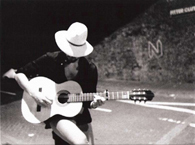


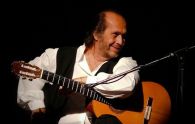
 Anyway, asking "what is the name of this and why does it work" is the theory question being asked, and I am just giving a possible description and reason. In flamenco practice of course no need to anaylize it this way, you just play it.
Anyway, asking "what is the name of this and why does it work" is the theory question being asked, and I am just giving a possible description and reason. In flamenco practice of course no need to anaylize it this way, you just play it. 
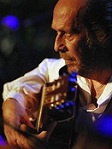
 Its just a chord, you dont have to be a dick about it.
Its just a chord, you dont have to be a dick about it. 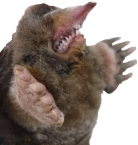
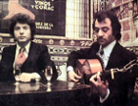
 New Messages
New Messages No New Messages
No New Messages Hot Topic w/ New Messages
Hot Topic w/ New Messages Hot Topic w/o New Messages
Hot Topic w/o New Messages Locked w/ New Messages
Locked w/ New Messages Locked w/o New Messages
Locked w/o New Messages Post New Thread
Post New Thread